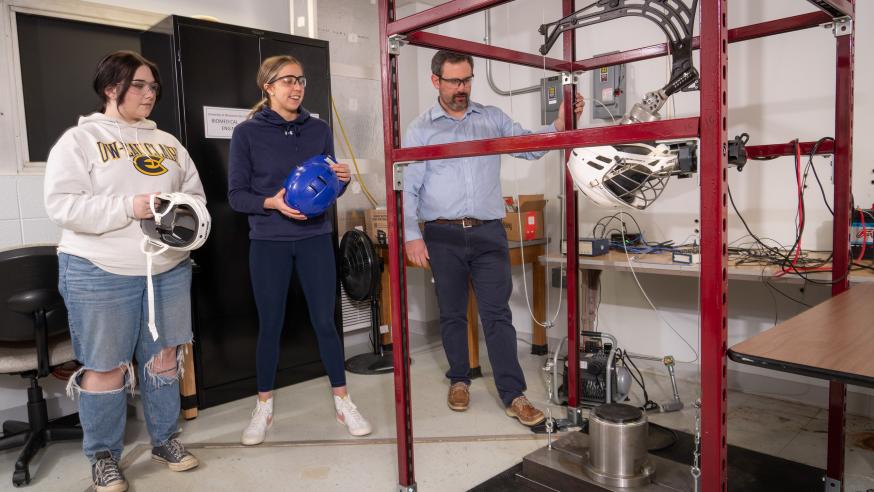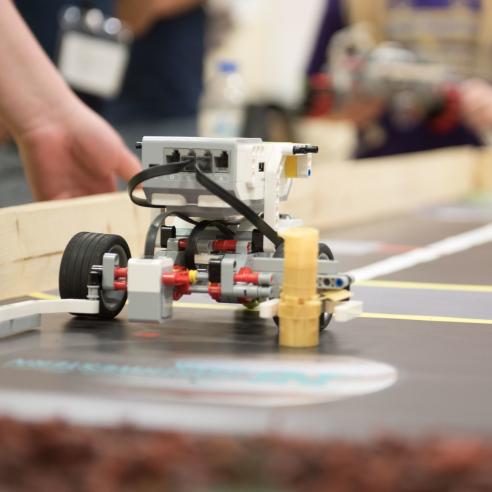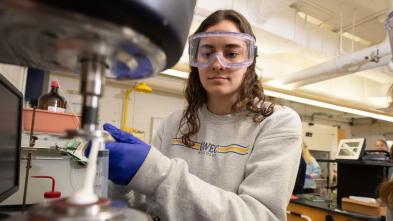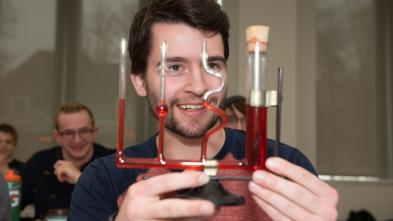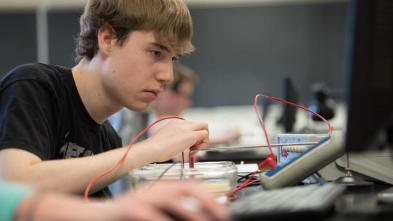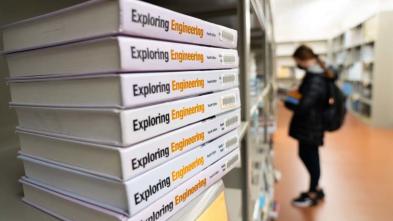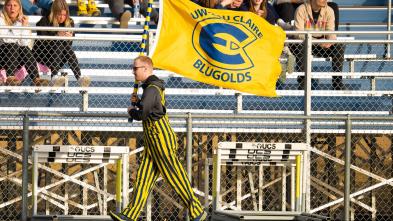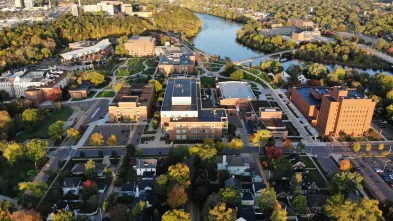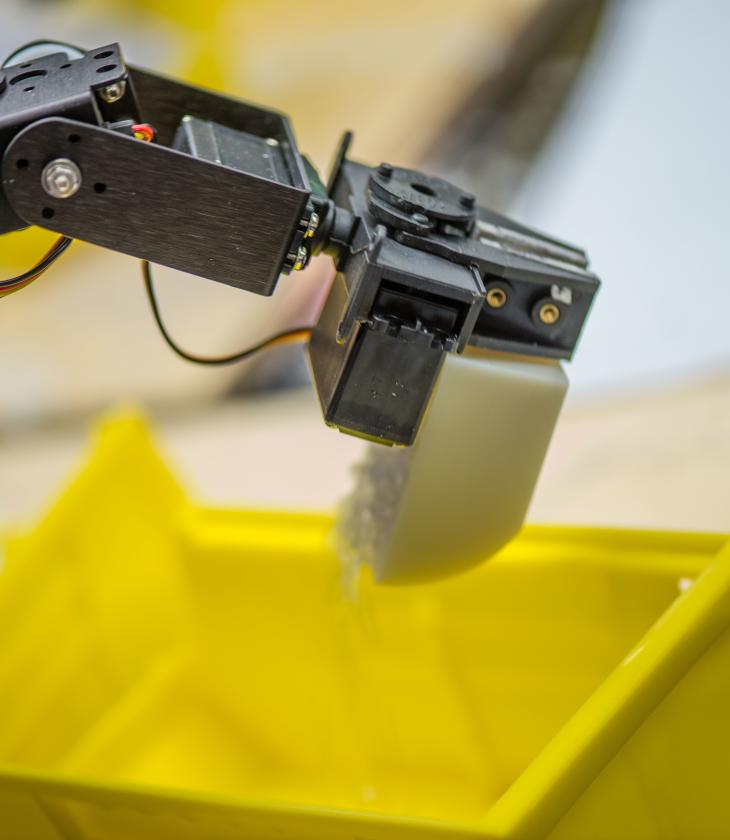
Physics and Engineering Dual Degree
Start your journey toward becoming an engineer. Graduates earn a bachelor's degree in both physics and engineering.
The Benefits of a Traditional Physics Degree and a Formal Engineering Education
Graduates of the program receive a bachelor's degree in physics from UW-Eau Claire in conjunction with a bachelor’s degree in engineering from the University of Wisconsin-Madison, University of Wisconsin-Milwaukee, University of Wisconsin-Stout, or the University of Minnesota-Twin Cities.
Most students are able to complete both degrees in five years, with many Blugolds spending approximately three years at UW-Eau Claire and approximately two years at their chosen engineering school. The growing program is designed to provide maximum flexibility for students to refine and change their professional focus and goals as they progress through the course sequence.
While at UW-Eau Claire, you'll learn the ins and outs of the engineering design process. Analyze and describe natural phenomena and human-made devices in terms of the basic laws of physics; use measurement technology, computational tools and statistical techniques to collect and interpret data; and develop needed solutions to everyday problems. Courses will explore topics like mechanics, statics, dynamics, thermodynamics, quantum physics, electricity, relativity, optics, and electrical circuits. Discussion and comparison of engineering disciplines will give you an inside look at the types of career paths you might be most interested in, while a variety of electives allow you to pursue multiple interests and passions.
Upon completion of the program, you'll have gained the knowledge and skills essential for a career in engineering. This know-how, combined with a strong foundation in math and physics, will put you ahead of graduates from other programs and prepare you well for a successful career in a variety of fields and industries.
Program Details
Blugold Stories
Justthe
facts

Where can the physics and engineering dual degree program lead me after graduation?
Employers are particularly impressed with physics and engineering dual degree graduates. This is largely due to the physics degree curriculum at UW-Eau Claire, which provides students with a stronger foundation in math and physics than a stand-alone engineering degree. This enhanced breadth and depth of knowledge will set you apart from graduates of other programs and give you a leg up when applying for jobs.
To further your employability, you also may choose to earn a minor in math or another related discipline.
Example Careers
- Engineer
- Mechanical engineer
- Electrical engineer
- Industrial engineer
- Wind farm engineer
- Electrical/software programmer
- Research scientist
Recent Graduates
Quality Engineer and Worldwide Stop Ship Coordinator
IBM
Tooling Engineer
Meier Tool & Engineering
Mechanical Engineer
TSI Plastics
Owner
Electronics Design/Consulting Firm
National Research Council Research Associate
NASA Johnson Space Center
Electrical Engineer
Intel
While at UW-Eau Claire, you’ll take courses in physics, chemistry, computer science, and math as well as courses related to general education. After successfully completing course requirements and meeting the set criteria, you can choose to transfer to either UW-Madison’s College of Engineering; UW-Milwaukee's College of Engineering and Applied Science; UW-Stout's College of Science, Technology, Engineering, Mathematics and Management; or University of Minnesota-Twin Cities College of Science and Engineering to begin the coursework for an engineering degree.
Here are a few courses in Physics and Engineering Dual Degree at UW-Eau Claire.
PHYS 231
University Physics I
Physics for science and engineering students, including the study of mechanics, simple harmonic motion, and wave motion.
PHYS 350
Electric and Electronic Circuits
General introduction to electrical circuits and electronics including analysis of DC and AC circuits, simple passive filters, diodes, transistors, operational amplifiers, simple digital electronics, and circuit design and construction.
PHYS 356
Dynamics
A continuation of Physics 255. Dynamics of rigid bodies, moments of inertia, work, energy, impulse, and momentum.
Get More Info
Sign up to receive additional information about our campus.
Meet the Faculty




